Luc Martens
Batch versus Sequential Active Learning for Recommender Systems
Jan 19, 2022Abstract:Recommender systems have been investigated for many years, with the aim of generating the most accurate recommendations possible. However, available data about new users is often insufficient, leading to inaccurate recommendations; an issue that is known as the cold-start problem. A solution can be active learning. Active learning strategies proactively select items and ask users to rate these. This way, detailed user preferences can be acquired and as a result, more accurate recommendations can be offered to the user. In this study, we compare five active learning algorithms, combined with three different predictor algorithms, which are used to estimate to what extent the user would like the item that is asked to rate. In addition, two modes are tested for selecting the items: batch mode (all items at once), and sequential mode (the items one by one). Evaluation of the recommender in terms of rating prediction, decision support, and the ranking of items, showed that sequential mode produces the most accurate recommendations for dense data sets. Differences between the active learning algorithms are small. For most active learners, the best predictor turned out to be FunkSVD in combination with sequential mode.
Multi-Static UWB Radar-based Passive Human Tracking Using COTS Devices
Sep 27, 2021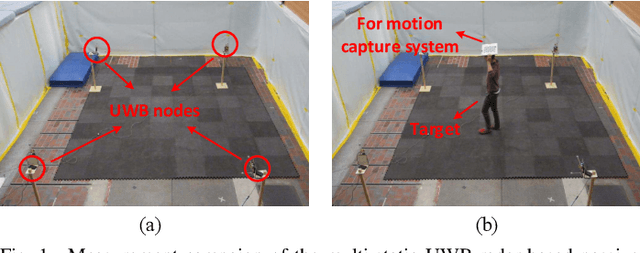
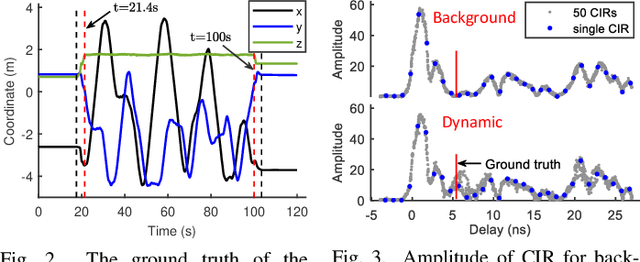
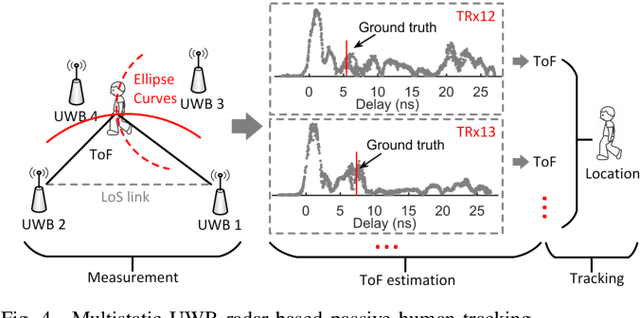
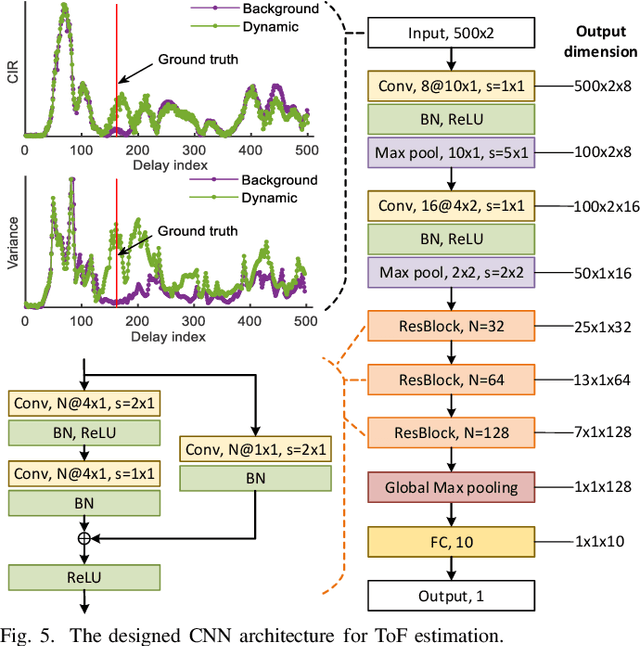
Abstract:Due to its high delay resolution, the ultra-wideband (UWB) technique has been widely adopted for fine-grained indoor localization. Instead of active positioning, multi-static UWB radar-based passive human tracking is explored using commercial off-the-shelf (COTS) devices. To extract the time-of-flight (ToF) reflected by the moving person, channel impulse responses (CIR) and the corresponding variances are used to train the convolutional neural networks (CNN) model. Particle filter algorithm is adopted to track the moving person based on the extracted ToFs of all pairs of links. Experimental results show that the proposed CIR- and variance-based CNN models achieve 30.12-cm and 29.04-cm root-mean-square errors (RMSEs), respectively. Especially, the variance-based CNN model is robust to the scenario changing and promising for practical applications.
An efficient genetic algorithm for large-scale planning of robust industrial wireless networks
Aug 12, 2017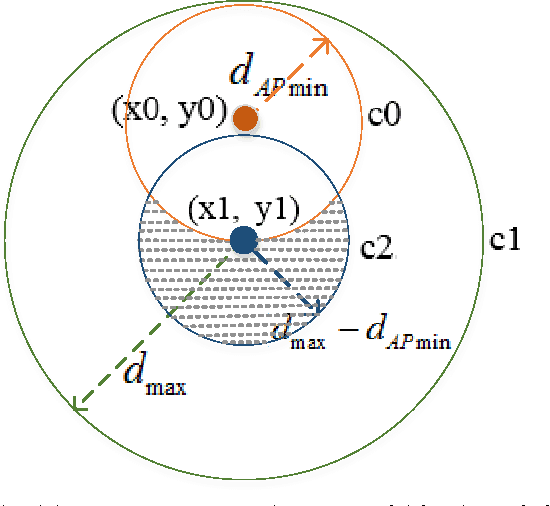
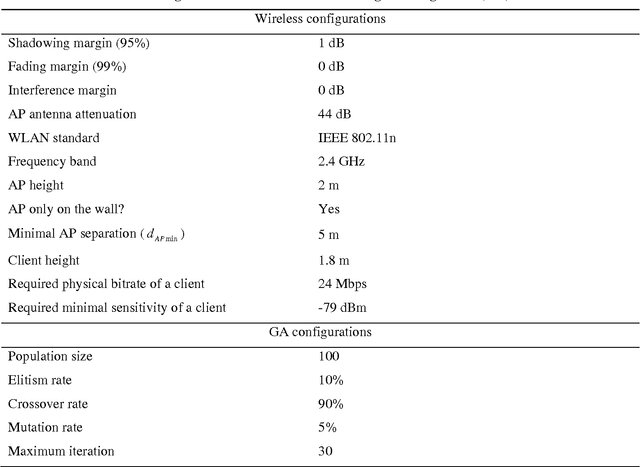
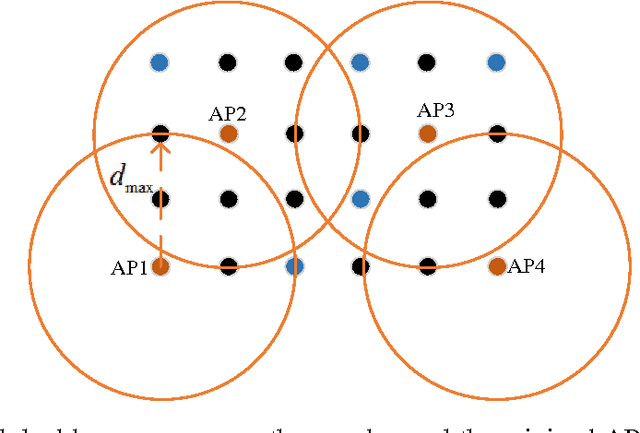

Abstract:An industrial indoor environment is harsh for wireless communications compared to an office environment, because the prevalent metal easily causes shadowing effects and affects the availability of an industrial wireless local area network (IWLAN). On the one hand, it is costly, time-consuming, and ineffective to perform trial-and-error manual deployment of wireless nodes. On the other hand, the existing wireless planning tools only focus on office environments such that it is hard to plan IWLANs due to the larger problem size and the deployed IWLANs are vulnerable to prevalent shadowing effects in harsh industrial indoor environments. To fill this gap, this paper proposes an overdimensioning model and a genetic algorithm based over-dimensioning (GAOD) algorithm for deploying large-scale robust IWLANs. As a progress beyond the state-of-the-art wireless planning, two full coverage layers are created. The second coverage layer serves as redundancy in case of shadowing. Meanwhile, the deployment cost is reduced by minimizing the number of access points (APs); the hard constraint of minimal inter-AP spatial paration avoids multiple APs covering the same area to be simultaneously shadowed by the same obstacle. The computation time and occupied memory are dedicatedly considered in the design of GAOD for large-scale optimization. A greedy heuristic based over-dimensioning (GHOD) algorithm and a random OD algorithm are taken as benchmarks. In two vehicle manufacturers with a small and large indoor environment, GAOD outperformed GHOD with up to 20% less APs, while GHOD outputted up to 25% less APs than a random OD algorithm. Furthermore, the effectiveness of this model and GAOD was experimentally validated with a real deployment system.
An efficient genetic algorithm for large-scale transmit power control of dense industrial wireless networks
Aug 12, 2017
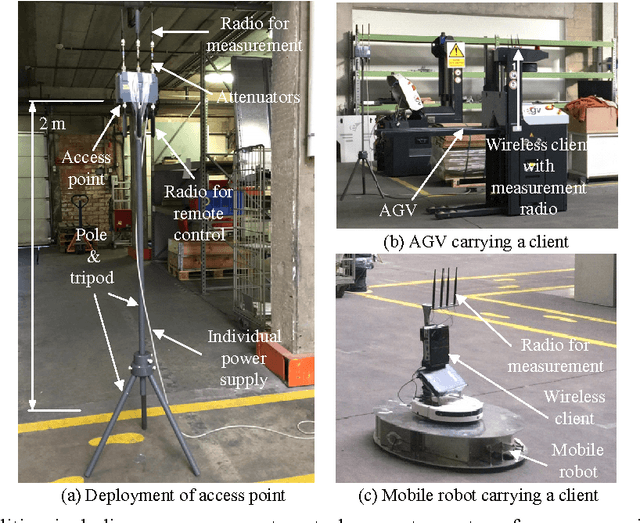

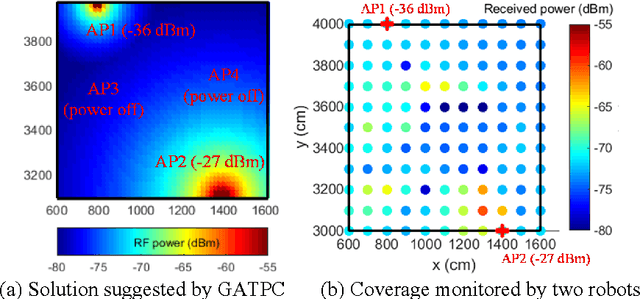
Abstract:The industrial wireless local area network (IWLAN) is increasingly dense, not only due to the penetration of wireless applications into factories and warehouses, but also because of the rising need of redundancy for robust wireless coverage. Instead of powering on all the nodes with the maximal transmit power, it becomes an unavoidable challenge to control the transmit power of all wireless nodes on a large scale, in order to reduce interference and adapt coverage to the latest shadowing effects in the environment. Therefore, this paper proposes an efficient genetic algorithm (GA) to solve this transmit power control (TPC) problem for dense IWLANs, named GATPC. Effective population initialization, crossover and mutation, parallel computing as well as dedicated speedup measures are introduced to tailor GATPC for the large-scale optimization that is intrinsically involved in this problem. In contrast to most coverage-related optimization algorithms which cannot deal with the prevalent shadowing effects in harsh industrial indoor environments, an empirical one-slope path loss model considering three-dimensional obstacle shadowing effects is used in GATPC, in order to enable accurate yet simple coverage prediction. Experimental validation and numerical experiments in real industrial cases show the promising performance of GATPC in terms of scalability to a hyper-large scale, up to 37-times speedup in resolution runtime, and solution quality to achieve adaptive coverage and to minimize interference.
 Add to Chrome
Add to Chrome Add to Firefox
Add to Firefox Add to Edge
Add to Edge